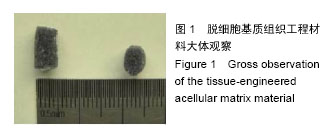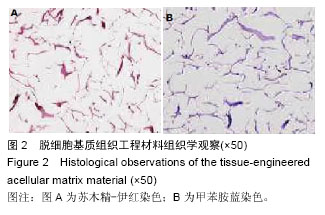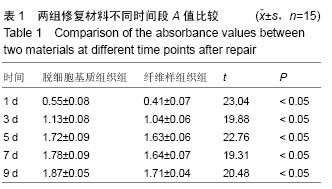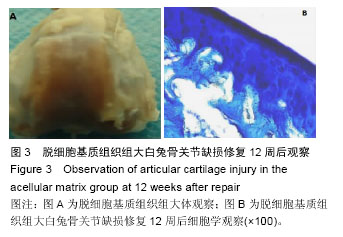| [1] 李海鹏,孙天胜.朱娟丽.等.关节镜检查不同年龄段患者膝关节软骨损伤特点[J].中国骨伤,2012,25(11):903-905.
[2] Menetrey J,Unno-Veith F,Madry H,et al.Epidemiology and imaging of the subchondral bone in articular cartilage repair.Knee Surg Sports Traumatol Arthrosc. 2010;18(4): 463-471.
[3] Casula V,Hirvasniemi J,Lehenkari P,et al. Association between quantitative MRI and ICRS arthroscopic grading of articular cartilage. Knee Surg Sports Traumatol Arthrosc.2014. [Epubahead of print].
[4] Knapik DM,Harris JD,Pangrazzi G,et al. The basic science of continuous passive motion in promoting knee health: a systematic review of studies in a rabbit model. Arthroscopy.2013;29(10):1722-1731.
[5] 曾旭文,梁治平,陈鸿辉,等.专用四肢关节磁共振在兔膝关节软骨缺损与修复中的应用[J]. 中山大学学报:医学科学版,2009,30(4):413-417.
[6] Gibson M,Li H,Coburn J,et al. Intra-articular delivery of glucosamine for treatment of experimental osteoarthritis created by a medial meniscectomy in a rat model. J Orthop Res.2014;32(2): 302-309.
[7] Oliveira P, Santos AA, Rodrigues T, et al.E ects of phototherapy on cartilage structure and in ammatory markers in an experimental model of osteoarthritis[J]. J Biomed Opt.2013;18(12):128004.
[8] Dhollander AA, Verdonk PC, Lambrecht S, et al. e combination of microfracture and a cell-free polymer-based implant immersed with autologous serum for cartilage defect coverage. Knee Surg Sports Traumatol Arthrosc.2012; 20(9):1773-1180.
[9] 李钦宗,周红星,张保健,等.磨削打孔法对治疗膝关节各期软骨缺损的疗效评价[J].中国内镜杂志,2013, 19(1): 42-45.
[10] 王彦明,余家阔,于长隆,等.关节镜下微骨折术修复膝关节软骨全层缺损的临床疗效观察[J].中国运动医学杂志, 2006,25(6):651-655.
[11] Bentley G,Biant LC,Vijayan S,et al. Minimum ten-year results of a prospective randomised study of autologous chondrocyte implantation versus mosaicplasty for symptomatic articular cartilage lesions of the knee. J Bone Joint Surg Br.2012;94(4): 504-509.
[12] 徐敬,赵建宁,徐海栋,等.关节软骨损伤修复研究进展[J].临床与病理杂志,2015,35(3):455-461.
[13] Rosa SC, Rufino AT, Judas FM, et al.Role of glucose as a modulator of anabolic and catabolic gene expression in normal and osteoarthritic human chondrocytes. J Cell Biochem. 2011;112(10): 2813-2824.
[14] 李五根,龚洪翰,曾献军,等.磁共振T2map成像在膝关节骨性关节炎中的应用价值[J].实用放射学杂志,2010, 26(5):707-711.
[15] 唐艳华,徐贤,江波,等.3.0T磁共振成像对健康青年人膝关节软骨T2值及厚度的定量分析[J].中国医学科学院学报, 2013,35(2):131-135.
[16] 王凌峰.要重视难愈性创面的基础与临床研究[J/CD].中华损伤与修复杂志:电子版,2012,7(4):4-5.
[17] 孙迎放.骨与关节损伤修复的研究进展[J/CD].中华损伤与修复杂志:电子版,2014,9(5):478-481.
[18] Buschbaum J,Fremd R,Pohlemann T,et al. Computer-assisted fracture reduction: a new approach for repositioning femoral fractures and planning reduction paths.Int J Comput Assist Radiol Surg.2014;3(10):1240.
[19] Vijayan S,Bartlett W,Bentley G,et al.Autologous chondrocyte implantation for osteochondral lesions in the knee using a bilayer collagen membrane and bone graft: a two-to eight-year follow-up study. J Bone Joint Surg Br.2012;4: 488-492.
[20] Hansen OM,Foldager CB,Christensen BB,et al. Increased chondro-cyte seeding density has no positive effect on cartilage repair in an MPEG-PLGA scaffold.Knee Surg Sports Traumatol Arthrosc.2013;2: 485-493.
[21] 丁然,游洪波,李锋,等.脉冲磁场与前软骨干细胞向成熟软骨细胞的增殖与分化:与Ihh/PTHrP信号通路活性有关吗[J].中国组织工程研究与临床康复,2010,14(20):3615-3619.
[22] 胡新锋,王宸,芮云峰,等.纤维环穿刺法建立兔椎间盘退变模型[J].东南大学学报:医学版,2012,31(4):441-446.
[23] 耿震,王宸.细胞生长因子对肌腱愈合的影响[J].中国修复重建外科杂志,2010,24(2):239-242.
[24] Gobbi A,Karnatzikos G,Mahajan V,et al.Platelet- rich plasma treatment in symptomatic patients with knee osteoarthritis: preliminary results in a group of active patients.Sports Health.2012;4(2): 162-172.
[25] Wang YT,Wu XT,Wang F.Regeneration potential and mechanism of bone marrow mesenchymal stem cell transplantation for treating intervertebral disc degeneration.J Or-thop Sci.2010;15(6) : 707-719.
[26] Kone E,Buda R,Fildardo G,et al.Platelet-rich plasma:intra-articular knee injections produced favorable results on degenerative cartilage lesions.Knee Surg Sports Trauma tol Arthrosc. 2010; 18(4) : 472-479.
[27] 张磊,孙水,任强,等.细胞复合β-磷酸三钙生物陶瓷修复软骨缺损的实验研究[J].中国矫形外科杂志, 2008,16(9): 698-701.
[28] 陆继鹏,舒钧,柏涛,等.复合材料置入软骨下骨诱发兔膝骨关节炎的实验研究[J].中国矫形外科杂志, 2007,15(3): 250-254.
[29] 张华亮,王文良,初殿伟,等.双层壳聚糖与HAP复合支架的初步研究[J].中国修复重建外科杂志, 2008,22(11): 1358-1363.
[30] Rodrigues MT,Lee SJ,Gomes ME,et al. Bilayered constructs aimed at osteochondral strategies: the influence of medium supplements in the osteogenic and chondrogenic differentiation of amniotic fluid- derived stem cells. Acta Biomater.2012;8(7): 2795-2806.
[31] Lam J, Lu S, Meretoja VV, et al. Generation of osteochondral tissue constructs with chondrogenically and osteogenically predifferentiated mesenchymal stem cells encapsulated in bilayered hydrogels. Acta Biomater.2014;10(3): 1112-1123.
[32] Sakata R,Kokubu T,Nagura I,et al. Localization of vascular endothelial growth factor during the early stages of osteochondral regeneration using a bioabsorbable synthetic polymer scaffold.J Orthop Res.2012;30(2): 252-259.
[33] Kon E,Delcogliano M,Filardo G,et al. A novel nano-compositemulti-layered biomaterial for treatment of osteochondral lesions: technique note and an early stability pilot clinical trial. Injury.2010;41(7): 693-701.
[34] Mohan N,Dormer NH,Caldwell KL,et al.Continuous gradients of material composition and growth factors for effective regeneration of the osteochondral interface. Tissue Eng Part A.2011; 17(21/22): 2845-2855.
[35] 杨兴华,张僚,陈岱运,等.兔骨髓基质干细胞的培养及成骨诱导研究[J].泰山医学院学报,2008,29(12):945-948.
[36] 王其友,徐义春,蔡道章,等.犬骨髓基质干细胞体外定向分化为软骨细胞[J].中国组织工程研究与临床康复,2009, 13(46):9037-9040.
[37] 周军杰,俞光荣,曹成福,等.组织工程化软骨细胞的定向诱导分化[J].中国组织工程研究与临床康复, 2010,14(33): 6194-6197.
[38] 满城,张碧,马永清,等. 关节腔注射TGF-1 治疗兔颞下颌关节骨关节炎的实验研究[J].临床口腔医学杂志, 2009, 25(12):714-716.
[39] 付寅生,张怡. 现代吸脂技术采集脂肪混合物在脂肪干细胞制备领域中的应用[J].中国组织工程研究,2014,18(1): 131-136.
[40] Van Pham P,Bui KH,Ngo DQ,et al. Activated platelet-rich plasma improves adipose-derived stem cell transplantation efficiency in injured articular cartilage. Stem Cell Res Ther.2013;4(4);91. |
.jpg)




.jpg)
.jpg)